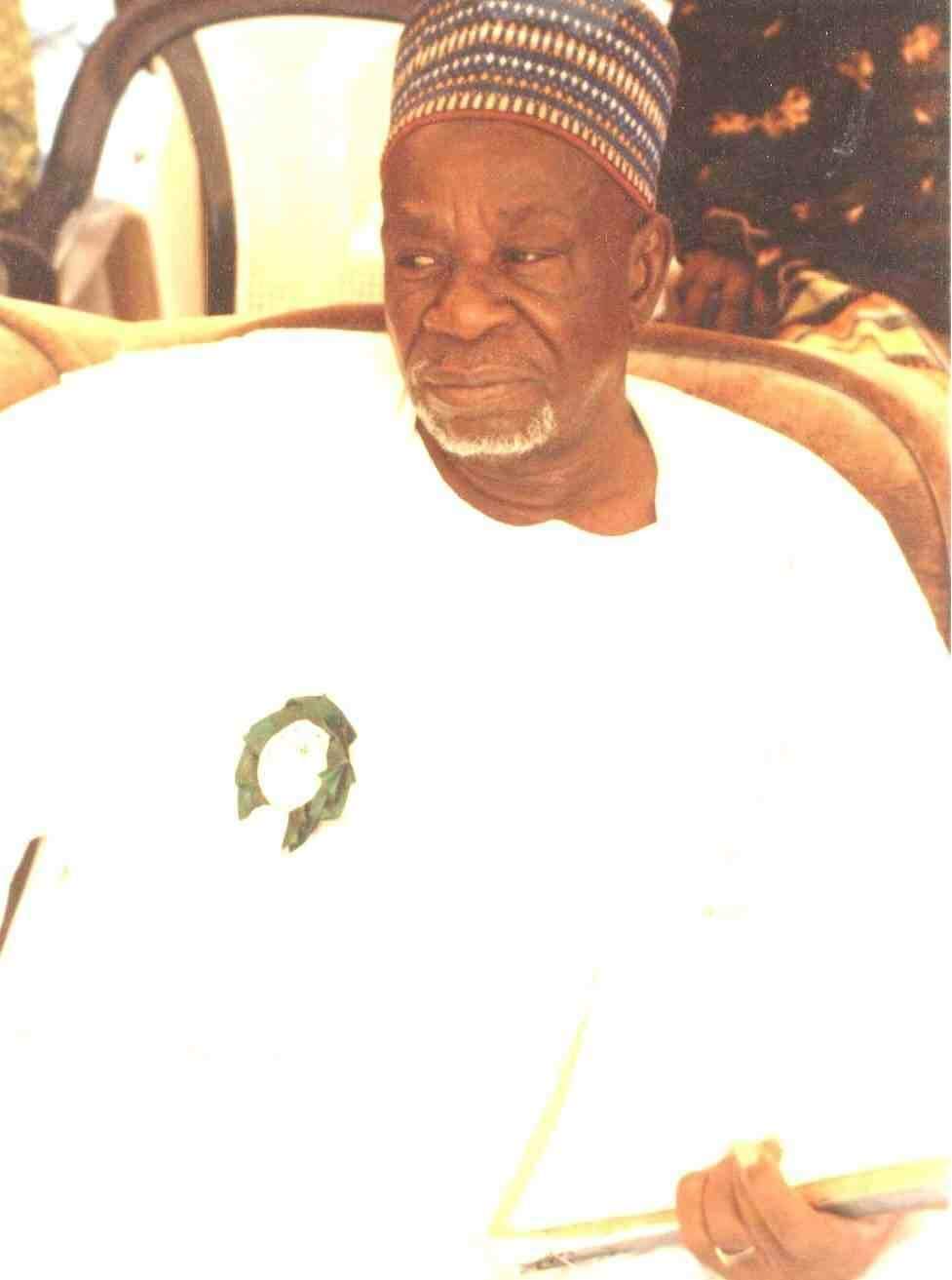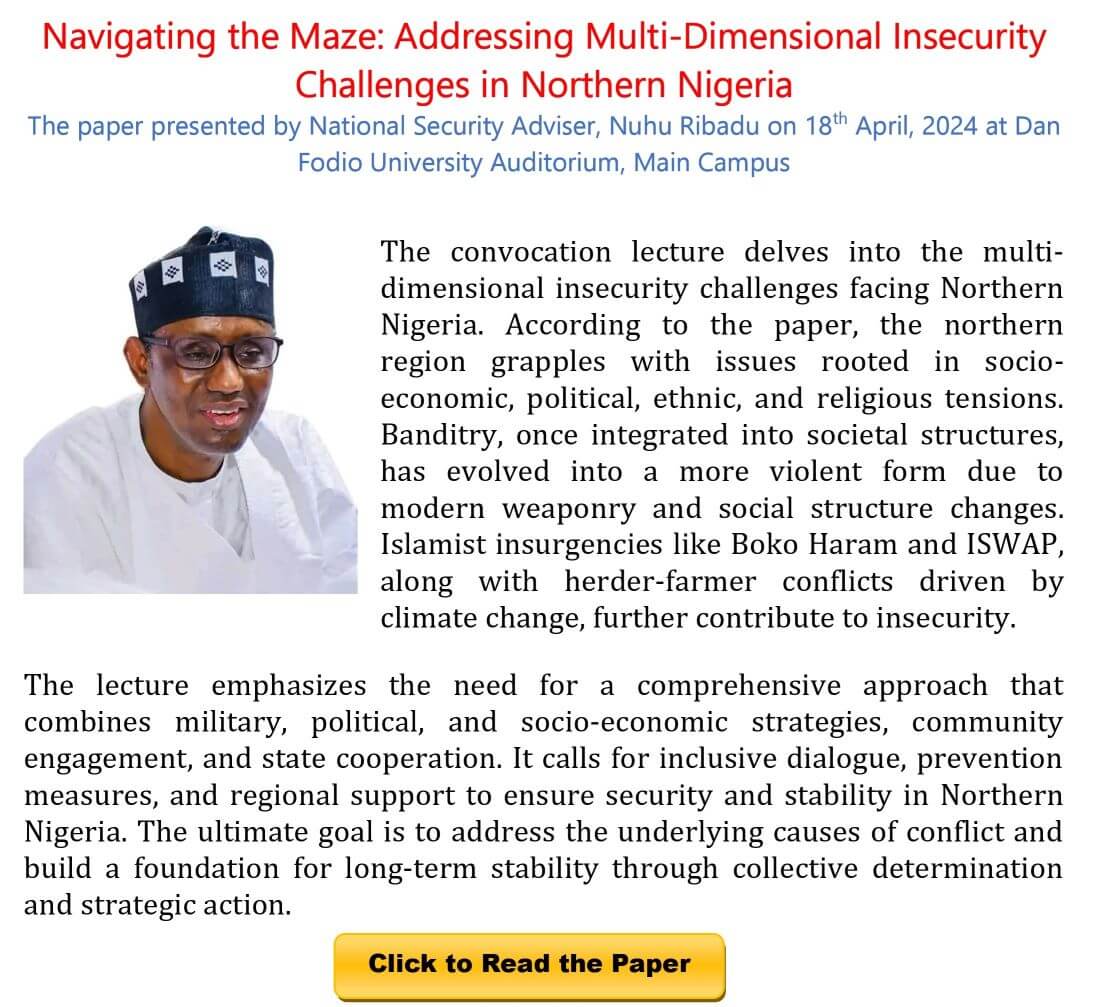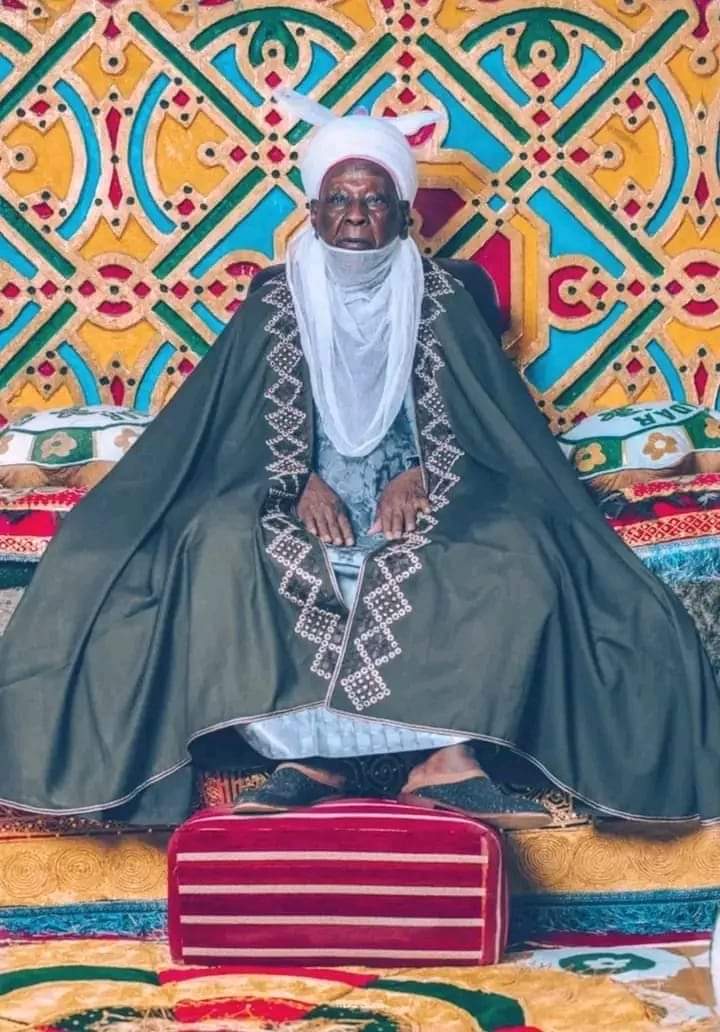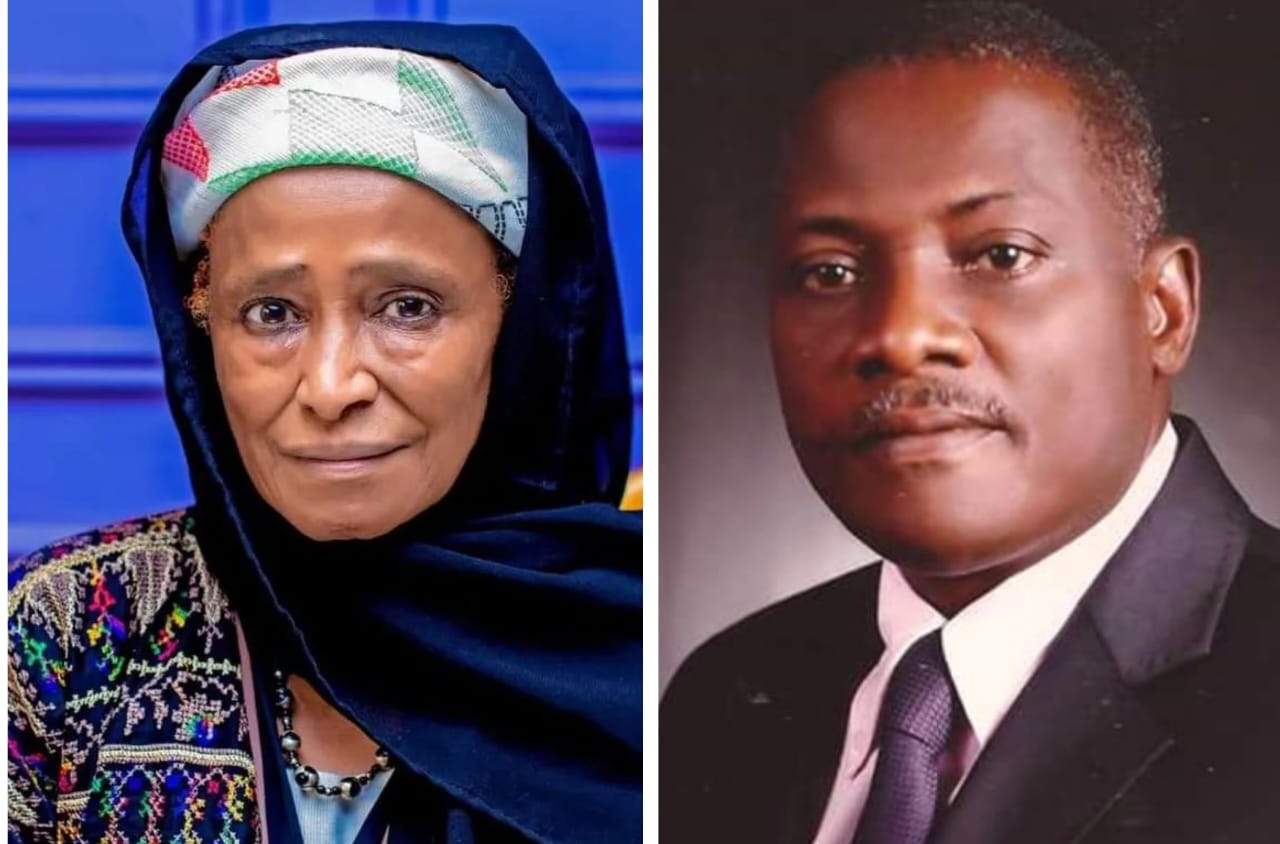Silent Scholarship: Alhaji Maje Ahmad Gwangwazo (Kano)

- Katsina City News
- 17 Apr, 2024
- 186
I can’t recall the year. But he came knocking on my door on the Bayero University campus housing I lived then. An old man, almost the same age as my own dad. Very dignified. He cheerfully introduced himself as Maje Ahmad Gwangwazo. I have heard of his Radio Kano programs on Kano histories. I even listened to a few of them and came away impressed with the level of detailed scholarship he presented from a local level.
The purpose of his visit was to ask for ‘Rabi’at’ fonts. I had become something of a minor celebrity in the ICT world in 1996 when I ‘invented’ the Rabi’at and Abdalla ‘hooked’ Hausa TrueType Fonts for use in Hausa writing on text processing programs. I had placed them into public domain (mans they were free to anyone who wanted them; the start of acibilism!). Alhaji Maje wanted the fonts because he had been encouraged to publish the manuscripts—written in Hausa, of course—he had been reading on Radio as a book. I was very happy to oblige.
That signaled the beginning of a long scholastic relationship. He was simply amazing. He lived in Gwangwazo ward in the heart of the city of Kano. Right across the road, was the Emir of Kano’s palace. Alhaji Maje was a familiar person in the palace, and spent years talking to the various courtiers in the palace who were either his mates or older than him. The end product was his ability to amass massive data on not just palace histories, but also Kano itself. The beauty of the history of Kano is its tightly woven nature—an interconnected mosaic where everything is joined at the hip.
Starting with the radio broadcasts, he elicited massive interest from listeners about the history of Kano. What made it truly amazing was his easy-going conversational narrative. It was as if there were only two of you, having a quite coffee in the cool tree shades of a sun-soaked garden and discussing the history of Kano. His narrative approach deconstructed the dense narratives of English language writers of similar historiographies of Kano such as those by Michael G. Smith, Herbert Richmond Palmer, Mervyn Hiskett, John Paden, Murray Last, etc. Abubakar Dokaji and Adamu Na Ma’aji were also local historians; but it was Alhaji Maje who brought out the history of Kano vividly to the masses in the 1990s through the mass media of radio and printing.
I was eventually incorporated into Alhaji Maje’s writing process, including data collection. Not only was I assisting with the formatting and sorting out of the various drafts he wrote (and he had a young assistant, Jafaru, who typed all his manuscripts), he also requested for critical feedback from me, based on the little that I know of the same histories he was covering from English language sources. He was just simply amazing. Constantly on the move, constantly checking and verifying morsels of information he gathered here and there. The first set of his works to be completed was the a huge “Tarihin Kano Kafin Jihad” (History of Kano Before the Jihad) which he published in five volumes, with each volume representing a particular historical period.
His works did not stop at the narrative re-telling of the history of Kano in Hausa language. He was more extensive than that. He had also tackled the histories of the various merchants of Kano, effectively covering economic bibliographies, right from the foundation the city-State. This was in “Kano Cibiyar Kasuwancin Afirka Littafi na Ɗaya” (Kano the Center of Commerce in Africa, Vol 1) which covered 100 Kano merchants—each with their photograph (where possible) and summarized biography, including how the data was obtained. I remember trailing Alhaji Maje to various merchants to obtain additional information.
When I was growing up in Daneji (Kano city), an elder in the neighborhood used to refer to me as “Abdalla Dunu”. I had no idea what he meant, and was too intimidated to ask. I liked it though! It was through Alhaji Maje’s book that I learned that Abdalla Dunu was a merchant from Ƙofar Mazugal in Kano city. He was born in 1883 and died in 1969. Apparently ‘Dunu’ was from ‘Dunama’, which means ‘the strong one’ in the Kanuri language; for Dunu’s grandmother was Kanuri. His antecedents were from Damagaram in present Niger Republic. He belonged to the hugely successful and influential Yakudima merchant dynasty in Kano. I am not sure if there was a volume 2 of the book.
But perhaps the best known work from Maje Gwangwazo’s corpus was the history of Kano wards. This was covered in two volumes: Kano Garin Albarka ‘A’: Gabas da Yamma, and Kano Garin Albarka ‘B’: Kudu da Arewa. There were earlier works devoted exclusively to Kano wards. An example was “Kano Ta Dabo Tumbin Giwa: Tarihin Unguwannin Kano da Mazaunanta da Ganuwa da Ƙofofin Gari”. This was written by Alhaji Ahmad Bahago, and published in 1998 by Munawwar Books Foundation. However, this was nowhere near as comprehensive as Alhaji Maje’s treatment of the topic in two volumes.
In the first instance, Alhaji Maje tenaciously followed up every single information about the individual wards and recorded it. Secondly, he interviewed the ward heads as he met them, checked and cross-checked the information given to him. He topped up such deep field study with the pictures of the ward heads as he met them at the time.
His books that I am aware of included: Tarihin Sarakunan Kano, 1805-2003, Tarihin Kano Kafin Jihadi (five volumes), Kan Garin Albarka (2 volumes), Gani Ya Kori Ji: Kano da Ƙofofinta Fiye da Shekara 800, Gamzaki Mai Asubahi in ya Fito Gari Ya Waye: Mai Martaba Sarkin Kano Ado Bayero, Kano Cibiyar Kasuwancin Afirka Littafi na Daya, Tarihin Sarakunan Kano, 1805-2002, and Nigeria: Sha Gwagwarmaya All were personally published between 2001 to 2004 (which means there is no established and known publisher).
With encouragement from Prof. Muhammad Sani Zahradeen, a book launching committee was formed and I was made a member. This was at the stage of his writing about Kano merchants. We visited Sheikh Isyaka Rabi’u, A.A. Rano and Alhaji Aminu Ɗantata. At the latter’s place, I tried to get him to agree to a biography on his life, but he was not interested. The books were all ‘launched’ (public presentation in Nigeria) in 2005 at the Ƙofar Mata Indoor Stadium, Kano.
No doubt about it. Alhaji Maje Gwangwazo was an excellent community scholar, historian and intellectual from Kano. That he remained uncelebrated was because all his writings were not in English language. Yet, even his Hausa language audience seemed to have largely been unaware of his books, despite a launching in 2005.
Now the big question: Where can one get Alhaji Ahmad Gwangwazo’s books? Even a representative his family phoned me sometime ago asking the same question!!!! I once had the ENTIRE collection, but gave it away, I am still puzzled as to why I did such a crazy thing (lesson learnt: NEVER give away a book. EVER!). Some booksellers may have a copy or two, but not the entire corpus. In fact, the only person I know who might have all the books was the Chairman of the Book Launch Committee, Prof. Muhammad Sani Zahradeen. A bookseller in Kano, Danladi, says he can get them using his network. His number is +234 803 644 7346. I know Abdulbasit Kassim has been trying to digitize them, and in fact had already scanned Tarihin Kano Kafin Jihadi 1 and 5. Too tedious, but then he is a tenacious chap, and might get around to doing the rest.
Bayero University Centre for Research in Nigerian Languages, Translation and Folklore has quite a few of Maje Ahmad Gwangwazo books in their Library, so if you want, you could try there. I scanned almost all of these pictures from the actual books, except his personal picture and Kasuwanci book (which is the only remaining one I have).
Leave a Reply
Your email address will not be published. Required fields are marked *







